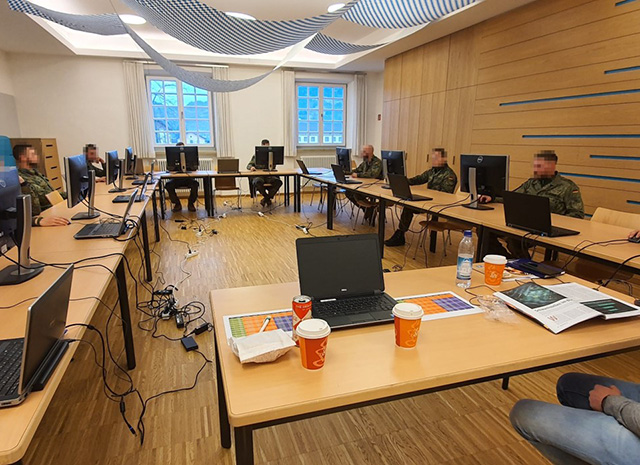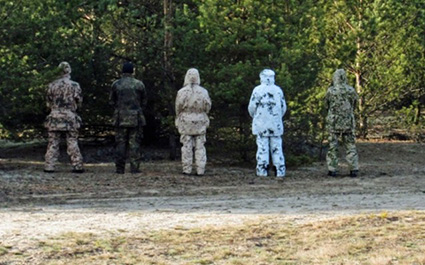


Project description
This work area is concerned with the evaluation of signature-changing measures by computer-supported, mathematical and behavioural-physiological investigations.
At the end of the day, the aim is to determine how various changes in the signature affect the camouflage performance, i.e. the change in detection, recognition and identification by humans and algorithms. Observer experiments are organised, carried out and evaluated to determine statistics relevant to camouflage evaluation. The aim is to determine the average time at which an object is detected and the distance at which the object is identified in order to evaluate the effectiveness of different camouflage materials or measures with regard to human observers. CARPET was developed for these observer experiments and is constantly being expanded and kept up-to-date. The current version is v5.01/2020.
The image-based camouflage evaluation is also carried out by a self-developed algorithm package ALOPEX, which determines the statistical deviation of objects from their immediate surroundings as well as in the context of the overall image and thus determines the camouflage performance as the degree of adaptation to the environment. This software package has been developed on the basis of neurobiological principles by imitating neuronal processes in the retina and visual cortex, thus attempting to determine the probability of a camouflaged object being fixed or overlooked by an observer.
These methods result in the creation of conspicuity heat maps, which mark the areas of an image or video that are conspicuous by a high degree of abnormality. These heat maps are checked by means of eye tracking and fixation heat maps and the algorithms are thus parametrically improved and further developed.
Complementing this bottom-up methodology, camouflage performance is evaluated using the detection and classification rate of artificial neural networks (CNN). At this point, novel AI-based methods are also investigated with respect to their importance for camouflage and camouflage evaluation.
 Fraunhofer Institute of Optronics, System Technologies and Image Exploitation IOSB
Fraunhofer Institute of Optronics, System Technologies and Image Exploitation IOSB 